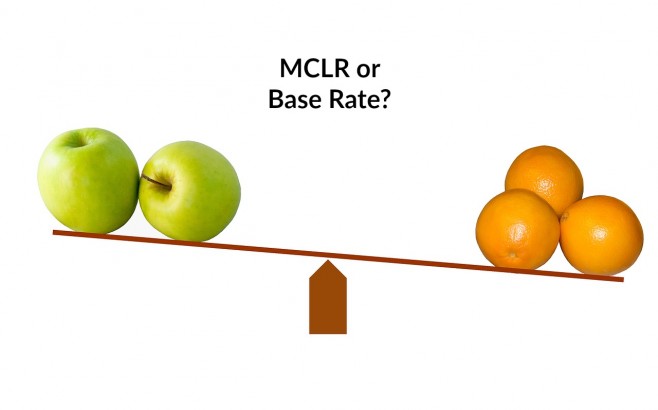Applying for a Home Loan in India has become an easy task these days. With increasing competition in the financial market, banks and NBFCs are readily providing loans with minimum rate of interest and flexible repayment options. They’ve eased the process of loan sanction and disbursement and you might not even need to visit their office to complete the loan application process.
Even the central government is encouraging first-time home buyers to avail Home Loans by giving an additional tax deduction of Rs.50,000 on interest paid for a loan amount of up to Rs.35 lakh.

As a first-time home buyer, it might be difficult for you to understand the numerous Home Loan terminologies. You may have queries regarding rate of interest (ROI), base rate, and EMIs that you have to pay on your Home Loan. In this article, you’ll be able to understand all of these, and will also gain an insight into MCLR, the new system of lending loans.
Base Rate System: A Transparent Hero
Before we understand it, let’s see what base rate and loan rate actually implies:
Base Rate:
It’s the minimum rate of interest below which a lender cannot give loans to their customers. The financial institutions arrive at this rate by taking into consideration their cost of operation and profit margins. This rate is reviewed by the bank or NBFC every quarter of a financial year.
The system of base rate was introduced by the RBI in the year 2010 to increase transparency in the credit market and to ensure that lenders issue loans at a standard rate to their customers.
Loan Rate:
The lender’s loan rate is base rate plus base points (bps). For instance, if the base rate is 10%, the bank can offer a loan with an addition of .50 bps, thereby making the loan rate 10.50%. When you’re analyzing a financial institution’s Home Loan policies to avail the best housing loan in India, you must take their base and loan rates into consideration.
Is the Base Rate Constant?
The base rate is revised by the RBI every quarter of a financial year, and it may either increase or decrease. With the latest policy changes, a lender can alter its loan rates for new customers. For example, if the base rate comes down from 10% to 9.5%, the lender can offer new loans at a rate of 9.75% (adding a spread of .25 bps).
However, this scenario is not same for existing customers. Let’s assume that an existing customer was offered a loan at a rate of 10% plus a base point of .50, the final rate of interest being 10.50%. Now, when the base rate comes down to 9.5%, the interest rate for them will be 10%. A reduction in base rate, generally, tends to be a less-profitable scenario for existing borrowers.
As an existing customer, you might feel at a loss if your Home Loan rate is not revised as per the new base cuts. In such a case, you have the option of transferring your Home Loan balance to another bank or NBFC with a more feasible rate of interest.
Enters MCLR: The New Superhero
With effect from April 2016, the RBI has set up a new benchmark for calculating the lending rates at which lenders roll out loans to borrowers—Marginal Cost of Funds Based Lending Rate, or simply MCLR.
It has four parameters, marginal cost of funds, cost of maintaining cash reserve ratio (CRR), operating costs of banks, and tenor premium. It’s different from the base rate as its calculation includes marginal cost of funds and not simply the cost of funds available to the lending institution.
RBI asked lenders to set 5 to 6 MCLR rates, overnight, monthly, one month, 3 months, 6 months, and for a year. MCLR-linked loans will be reset for a maximum of one year. So, you’ll have a new interest rate on your Home Loan at a pre-decided time and for a maximum period of one year.
Now, if you take a Home Loan at floating rate of interest, and your reset rate is set for 6 months, your base rate will remain constant for the next six months irrespective of any changes in the interest rate in between.
Effect on Existing Customers
The existing customers who have borrowed money on the base rate system will have the same terms and conditions for the entire loan tenure.
But, existing borrowers can switch to MCLR-linked loans at mutually accepted terms between them and the lender. This, however, does not mean withdrawal of existing facilities by the lender. Once the borrowers opt for MCLR, they cannot switch back to a base rate system. Also, remember that the MCLR system is applicable only to flexible Home Loans and not to fixed Home Loans.
As of 5th April 2016, the RBI has cut down the repo rate by 25% to 6.5%, and it’s expecting lenders to reduce their base rate and MCLR on loans.
If you’re planning to avail a Home Loan or are an existing borrower, carefully go through the MCLR and base rate system’s terms and conditions before signing along the dotted lines. Also, check Home Loan eligibility to get an idea of the loan amount you is capable of repaying.




